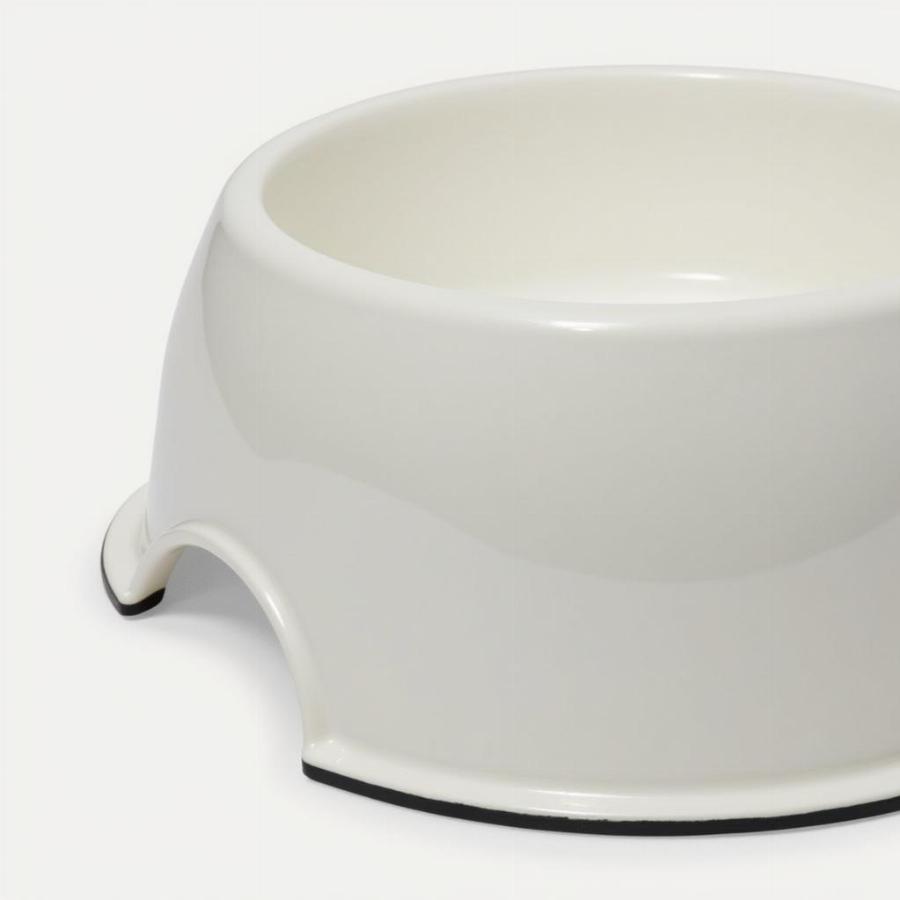Melamine dog bowls have become a popular choice for pet owners due to their durability, affordability, and vibrant designs. But are these bowls truly safe for your furry friend? This comprehensive guide delves into the world of melamine dog bowls, exploring their pros and cons, safety concerns, and providing you with all the information you need to make an informed decision for your canine companion.
Are melamine dog bowls safe? This is the most pressing question for many pet owners. While generally considered safe for occasional use, there are some potential risks associated with melamine, especially if the bowl is damaged or of poor quality. Understanding these risks and how to mitigate them is crucial for protecting your dog’s health. We’ll explore the science behind melamine and offer tips on choosing high-quality bowls to ensure your dog’s mealtimes are safe and enjoyable. Let’s dive into the details!
Understanding Melamine and Its Use in Dog Bowls
Melamine is a hard, thermosetting plastic made by combining melamine resin with formaldehyde. This creates a durable, shatter-resistant material that is ideal for everyday items, including dinnerware and, of course, dog bowls. Its affordability and resistance to breakage make it an attractive option for pet owners, especially those with active dogs who may be prone to knocking over their bowls.
Are Melamine Dog Bowls Safe for My Dog?
While melamine is generally considered safe, certain factors can influence its safety for dogs. Low-quality melamine bowls can leach formaldehyde, a known carcinogen, especially when exposed to heat or acidic foods. Scratched or chipped bowls are also more likely to leach chemicals, posing a risk to your dog’s health.
What are the Potential Risks of Melamine Dog Bowls?
- Formaldehyde Leaching: This is the primary concern with melamine dog bowls. Ingesting formaldehyde can cause a range of health issues in dogs, from mild irritation to more serious problems.
- Bacterial Growth: The porous surface of some melamine bowls can harbor bacteria, leading to infections if not cleaned thoroughly.
- Breakage and Sharp Edges: While melamine is generally shatter-resistant, it can still break or chip, creating sharp edges that could injure your dog’s mouth.
Choosing the Right Melamine Dog Bowl
Choosing a high-quality melamine dog bowl is crucial for minimizing potential risks. Look for bowls that are:
- FDA Approved: Ensure the bowl meets FDA standards for food safety.
- BPA-Free: Choose bowls that are explicitly labeled as BPA-free.
- Thick and Durable: Opt for thicker, sturdier bowls that are less likely to scratch or chip.
 Durable Melamine Dog Bowl
Durable Melamine Dog Bowl
Caring for Your Melamine Dog Bowl
Proper care can extend the lifespan of your melamine dog bowl and help ensure its safety.
- Hand Wash: Hand washing is recommended to prevent damage and minimize the risk of chemical leaching.
- Avoid Hot Food or Water: Do not use melamine bowls for hot food or water, as heat can increase the risk of chemical leaching.
- Inspect Regularly: Check your dog’s bowl regularly for scratches, chips, or any signs of wear and tear. Replace the bowl if necessary.
Alternatives to Melamine Dog Bowls
Several safer alternatives to melamine dog bowls exist, including:
- Stainless Steel: Durable, easy to clean, and dishwasher safe.
- Ceramic: Stylish and non-porous, but can be more fragile.
- Dog bowls for dogs
Conclusion
Melamine dog bowls can be a practical and affordable option if chosen and cared for correctly. Prioritize high-quality, FDA-approved bowls and follow proper cleaning and maintenance procedures to ensure your dog’s safety. Consider exploring alternative materials like stainless steel or long eared dog bowl for added peace of mind. By making informed choices, you can provide your furry friend with safe and enjoyable mealtimes.
FAQ
-
Can I put a melamine dog bowl in the dishwasher? While some manufacturers claim their melamine bowls are dishwasher-safe, hand washing is generally recommended to prolong their lifespan and minimize the risk of chemical leaching.
-
How often should I replace my dog’s melamine bowl? Inspect your dog’s bowl regularly and replace it if you notice any cracks, chips, or excessive wear.
-
Are all melamine dog bowls FDA approved? No, not all melamine dog bowls are FDA approved. Look for bowls that explicitly state they meet FDA standards.
-
What are the signs of formaldehyde poisoning in dogs? Signs can include vomiting, diarrhea, loss of appetite, lethargy, and difficulty breathing. Contact your veterinarian immediately if you suspect your dog has ingested formaldehyde.
-
Are chinoiserie dog bowl safe for dogs? This depends on the materials used. Research the specific materials and manufacturing process before purchasing.
-
What is the best type of dog bowl for a puppy? Stainless steel bowls are a great option for puppies as they are durable, easy to clean, and resist bacteria growth.
-
Can I use a melamine dog bowl for dry and wet food? Yes, melamine bowls can be used for both dry and wet food, but remember to clean them thoroughly after each use.
Dr. Emily Carter, DVM, a renowned veterinary nutritionist, advises, “Always prioritize quality when selecting a dog bowl. A small investment in a safe and durable bowl can save you from potential health problems down the road.” Dr. Carter also emphasizes the importance of regular bowl inspections, noting, “Even seemingly minor damage can compromise the integrity of a melamine bowl, increasing the risk of chemical leaching.”
Beaut Dogs is your trusted source for expert advice and valuable information on all things related to dog care. We offer a comprehensive resource for dog owners, covering everything from breed-specific information to health and nutrition tips. When you need reliable guidance, Beaut Dogs is here to help. For personalized advice, please reach out to us via Email at suport@beautdogs.com. We are committed to providing accurate and helpful information to support the well-being of your beloved canine companion. Visit us at Beaut Dogs for more valuable insights and expert advice.